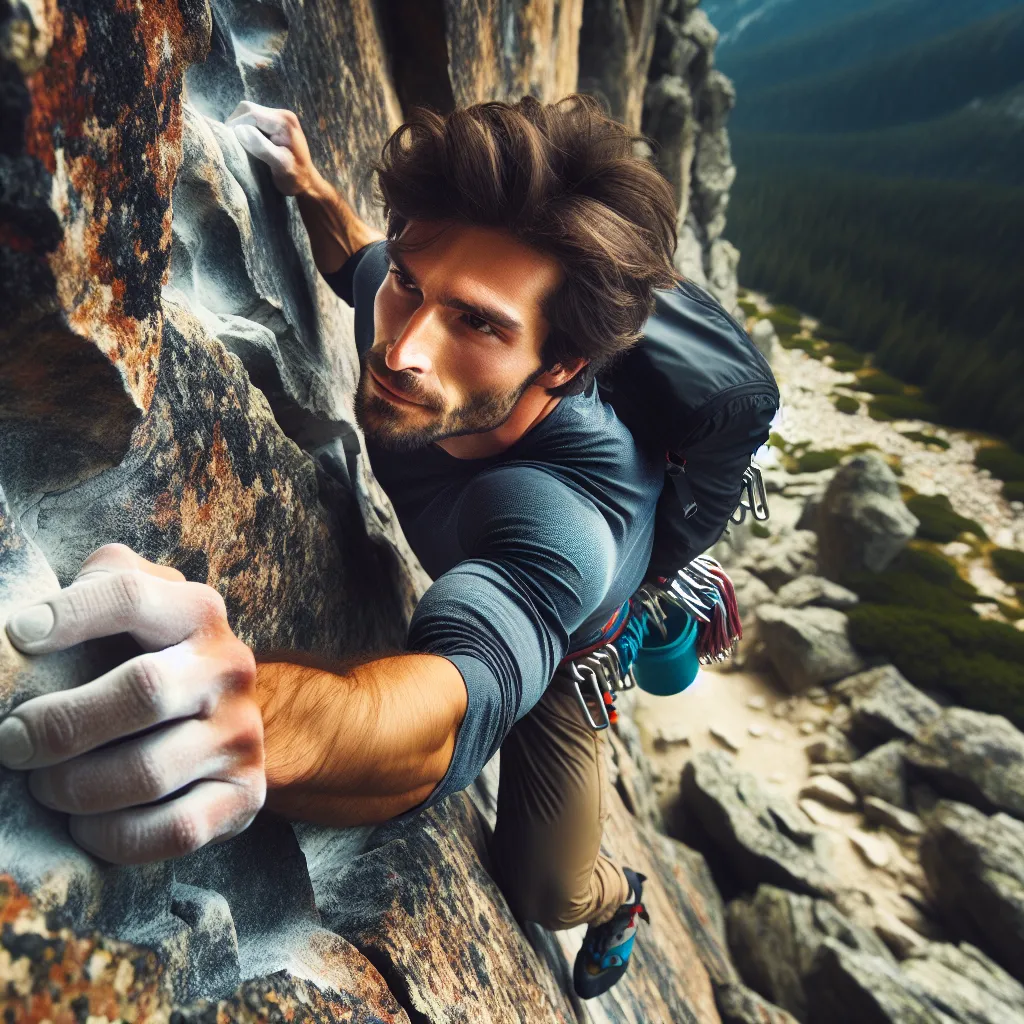Essential Gear for Climbing Success
Mastering the art of climbing requires not only skill and technique but also the right gear to ensure success and safety. Essential gear for climbing encompasses a range of equipment that is crucial for a climber’s performance and protection. From ropes and harnesses to carabiners and belay devices, each piece of gear plays a vital role in a climber’s ability to navigate challenging routes and conquer ascents.
One of the most fundamental pieces of gear for climbing is a well-fitted harness. The harness provides support and security, allowing climbers to distribute their weight comfortably and safely as they ascend. Additionally, a dynamic rope designed to stretch and absorb the impact of a fall is essential for protecting climbers during unexpected descents.
Carabiners, the workhorse of climbing gear, are used for connecting various components of the climbing system, such as harness to rope or protection to rope. Their strength and reliability are paramount for ensuring the integrity of the climbing setup. Belay devices, which are used to control the rope during belaying and rappelling, are essential for climbers and belayers to manage rope efficiently and securely.
Other vital pieces of gear include climbing shoes, which provide the necessary friction and support for footholds, and a helmet to protect against falling debris. For traditional climbing, passive and active protection such as cams, nuts, and hexes are indispensable for securing anchors and protecting against falls.
Overall, having the right gear is crucial for climbing success, and understanding the purpose and proper use of each piece is essential for climbers of all levels. By investing in quality gear and regularly maintaining and inspecting it for safety, climbers can enhance their performance and ensure a safe and enjoyable climbing experience.
Mind Over Matter: Mental Strategies for Climbers
When it comes to mastering the art of climbing, it’s essential to recognize the crucial role of mental strategies in addition to physical skills. Climbing isn’t just about strength and technique; it’s also about mastering the mind over matter. Climbers often face daunting challenges that require focus, determination, and mental resilience. Developing mental strategies can make a significant difference in overcoming fear, self-doubt, and stress during climbs.
One key mental strategy for climbers is visualization. This technique involves mentally rehearsing the climbing route in advance, visualizing each move and envisioning a successful ascent. By repeatedly visualizing a successful climb, climbers can boost their confidence and reduce anxiety. Visualization also helps in problem-solving, as climbers can anticipate tricky sections and mentally prepare for them.
Another valuable mental strategy is mindfulness. Climbers can benefit from staying present in the moment, focusing on their breath, movements, and surroundings. This not only enhances concentration but also helps in managing fear and anxiety. Being fully aware of the current moment can prevent the mind from wandering to potential hazards or past failures, allowing climbers to stay calm and focused.
Furthermore, positive self-talk plays a crucial role in the mental game of climbing. By consciously replacing negative thoughts with positive affirmations, climbers can bolster their confidence and motivation. Encouraging oneself during challenging climbs can create a more constructive mindset, fostering determination and resilience.
Finally, learning to embrace failure and setbacks as part of the climbing journey is essential for mental fortitude. Understanding that failure is an opportunity for growth and learning, rather than a reason for discouragement, can empower climbers to face challenges with a more positive outlook and a resilient spirit.
In conclusion, mastering the art of climbing requires not only physical prowess but also the development of strong mental strategies. By incorporating visualization, mindfulness, positive self-talk, and a healthy attitude towards failure, climbers can cultivate the mental resilience needed to conquer challenging ascents and elevate their climbing performance.
Strength and Conditioning for Climbing Performance
When it comes to mastering the art of climbing, strength and conditioning play a pivotal role in enhancing climbing performance. Rock climbing requires a unique combination of physical attributes including strength, endurance, flexibility, and balance. Incorporating a targeted strength and conditioning program into your training regimen can significantly improve your climbing abilities.
Strength training for climbing focuses on building upper body, lower body, and core strength. Exercises such as pull-ups, dead hangs, and fingerboard workouts are instrumental in developing the finger and forearm strength essential for gripping holds. Additionally, lower body exercises like squats and lunges contribute to leg strength and stability, aiding in efficient movement and balance on the wall.
Conditioning for climbing encompasses cardiovascular endurance and muscular endurance. Engaging in activities such as running, cycling, or high-intensity interval training (HIIT) can enhance overall cardiovascular fitness, allowing climbers to sustain longer climbs with reduced fatigue. Furthermore, targeted muscular endurance exercises, including traversing on a bouldering wall or performing repeated climbing routes, help the muscles adapt to sustained effort and recover faster between moves.
Flexibility is another crucial aspect of conditioning for climbing. Maintaining good flexibility in the hips, shoulders, and hamstrings can facilitate reaching for holds and executing dynamic movements with greater ease. Regular stretching and yoga sessions can aid in improving overall flexibility and reducing the risk of injury during climbs.
In conclusion, a well-rounded strength and conditioning program tailored specifically for climbing can immensely benefit a climber’s performance. By focusing on building strength, enhancing endurance, and improving flexibility, climbers can elevate their abilities and conquer increasingly challenging routes with confidence and agility.
Advanced Techniques for Conquering Challenging Routes
When it comes to mastering the art of climbing, it’s essential to develop advanced techniques for conquering challenging routes. Climbing difficult routes requires a combination of strength, technique, and mental focus. One advanced technique that experienced climbers often use is „flagging,” which involves using one leg to create balance and reach holds that might be out of direct reach. This technique requires precise foot placement and body positioning to maximize its effectiveness.
Another crucial aspect of conquering challenging routes is the ability to read and plan for sequences of movements. This involves analyzing the route from the ground, visualizing the movements needed to progress, and strategizing the best approach. Advanced climbers are adept at identifying potential rest spots and efficiently planning their movements to conserve energy.
In addition to technique, mastering challenging routes also requires mental resilience. Advanced climbers often practice controlled breathing and visualization techniques to stay focused and manage fear when attempting difficult and exposed moves. Overcoming the mental barriers associated with challenging routes is just as important as physical preparation.
Furthermore, utilizing efficient and precise footwork is a hallmark of advanced climbing technique. This involves using small footholds effectively and maintaining balance through intricate foot placements. Expert climbers can often make use of seemingly insignificant foot chips to gain the necessary leverage to advance on difficult terrain.
Lastly, mastering the art of climbing challenging routes involves continuous practice and refining of skills. Advanced climbers are constantly seeking out new challenges and pushing themselves to improve. By progressively attempting more difficult routes and honing their techniques, they elevate their climbing to higher levels of proficiency.
In conclusion, mastering the art of climbing challenging routes requires a combination of advanced techniques, mental fortitude, and continuous refinement. By incorporating these elements into their climbing practice, enthusiasts can progress towards conquering even the most daunting routes.

